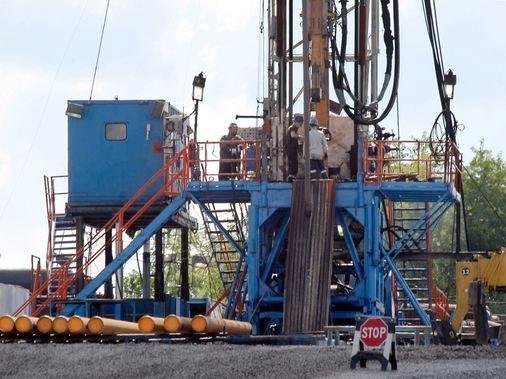
13 Jul 2004 | by Stephen Heins
Six months ago I wrote an article which the Milwaukee Journal Sentinel published, titled “Barron’s Article Knocks the Rust Off State Manufacturing outlook,” that recounted the predictions of a hedgefund manager named Jeff Gendell in an interview from a December edition of Barron’s Magazine.
In “Rust Removal,” Gendell stated that he expected the strongest U.S. recovery in a quarter of a century and that it was going to be felt predominately in the industrial sector of the Midwest.
He went on to say, “When people ask us if we are bullish, we say that given the outlook of Mishawaka (IN) and Milwaukee, we’re incredibly bullish.” The latest economic news including the employment numbers for the first five months of 2004 suggest that he was absolutely right.
In spite of a run-up in energy costs, the economy in general is now motoring along at an annual growth rated between 4 percent and 5 percent, with no end in sight. With the overall economy shedding the “jobless” label, employment is exhibiting the same pattern of growth with approximately a million new jobs created since the start of the year.
Even manufacturing jobs saw an interruption in their slow decline by adding 91,000 new jobs in 2004. Anecdotally, Quad/Graphics announced its largest round of hiring since 1998-99 with 150 to 200 new hires expected. In fact, a trend is emerging which has shown many competitive companies increasing hiring, increasing productivity and increasing sales volume at the same time; what I would call the virtuous economic trifecta.
While a lot of Wisconsin’s hand wringing has finally started to fade, I think it’s a good time to review the last four or five years without the usual panic or complacency. Given the false hope of the technology bubble of the late ’90s and early 2000, the best way to discuss the current state of the economy and employment is by agreeing that the 2 or 3 million extra jobs created by the late ’90s bubble were an illusion funded by $100 billion of irrational exuberance and venture capital. Both the jobs and the money were destined to evaporate along with the Internet promise of a “New Economy.”
In the end, the Internet mania joins tulips, railroads and radio in the graveyard of hyperbole. And I say, good riddance!
Let no one misunderstand me. The gut-wrenching process. of industrial recession of 2000-2003 was not an illusion, ‘nor were the many lessons from that period.
First, the facts: Wisconsin has a proud place in U.S. manufacturing history It is the 10th-largest employer of manufacturing workers in the U.S in spite of a low population ranking and trails only Indiana in the percentage of such workers. (The U.S. Bureau of Labor Statistics reported that 18.9 percent of Wisconsin’s work force was engaged in manufacturing; compared to 20.5 percent for Indiana.)
Not only that, Wisconsin has many small, medium and large industrial companies that are worldclass competitors in all kinds of goods and services. Names like Quad/Graphics, Charter Steel, Rockwell Automation, Trane, Trek, Kohler, Kimberly-Clark,f Toro, Regal Ware, Schneider Transportation, Oshkosh Truck, Highsmith, Arandell, Sadoff & Rudoy Bemis Manufacturing, Milwaukee journal Sentinel, Monroe Truck, Boldt Construction and Johnson Controls come to mind.
These Wisconsin companies are not resting on last year’s results and neither should any of us.
Therefore, the manufacturing sector in Wisconsin must continue the process of increasing sales, improving productivity, improving product quality and containing costs, without which no company can remain globally competitive for long. Chief among the costs that can be reduced still further is energy. A recent study done by the American Council for an Energy-Efficient Economy suggests that a 24 percent savings in electricity alone is achievable in the U.S. With the new power plants on the drawing boards, any larger reduction of electricity usage now is a hedge against inevitable future electric rate increases.
While seemingly counterintuitive, we need to reduce fixed costs like excess labor and over-capacity, so that we can create whole new categories of jobs that add value to our products and services.
In addition, we need to allow China and India to continue the process of taking many minimum-wage jobs. With their low labor costs, they are best able to make many commoditized products most inexpensively, which helps consumers everywhere.
On the other hand, the U.S. and Wisconsin manufacturers are better positioned to make the high-value products and services that come from the sophisticated integration of process, labor and technology.
Contrary to the efforts of well-meaning advocates of protectionism, we need to stop trying to impede progress. It just won’t work.
With a globally competitive manufacturing sector, Wisconsin has to continue to implement all of the survival tactics learned from the last four or five years by controlling costs, innovating new products and services and reinventing itself.
Instead of blaming others for our past problems, Wisconsin must recognize that it is well positioned to take advantage of the general uptick in the global economy. The Barron’s bounce predicted six months ago has begun. We can reasonably assume that this is just the beginning of a whole new round of Wisconsin economic growth.
“If you’re commanding a brigade in a fast-moving situation you’ve better things to do than to engage in hand-to-hand combat with the enemy” – Brigadiet Lord Loval, one of the first soldiers ashore during D-Day.
Copyright ADD, Inc. Feb 17, 2009






